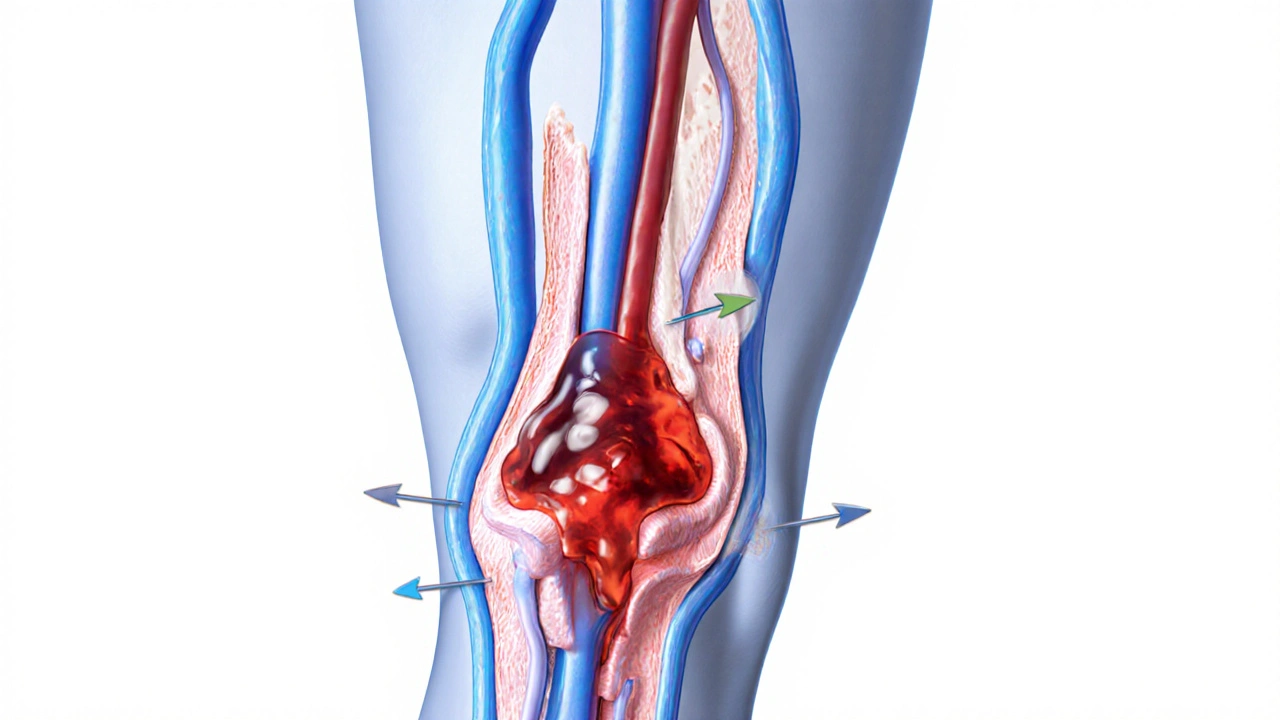Deep Vein Thrombosis: Causes, Risks, and What You Need to Know
When a blood clot forms in a deep vein—usually in the leg—it’s called Deep Vein Thrombosis, a condition where a clot blocks blood flow in a deep vein, often leading to swelling, pain, and potentially life-threatening complications. Also known as DVT, it’s not just a nuisance—it’s a medical warning sign that needs attention. Left untreated, this clot can break loose and travel to the lungs, causing a pulmonary embolism, a blockage in one of the pulmonary arteries in the lungs, often triggered by a clot from DVT. That’s why understanding DVT isn’t optional—it’s essential.
What causes it? Long periods of sitting—like during flights or bed rest after surgery—are big triggers. So are pregnancy, cancer, certain genetic conditions, and hormonal meds like birth control or hormone therapy. People with heart failure, obesity, or a history of blood clots are at higher risk. And here’s something many don’t realize: anticoagulants, medications that thin the blood to prevent or treat clots, commonly prescribed for DVT like warfarin or rivaroxaban are often needed for months, sometimes years. But they come with risks, especially if you’re also taking supplements like turmeric or black pepper, which can interfere with blood thinning. That’s why knowing your full medication and supplement list matters.
Prevention is simpler than you think. Move regularly. Stay hydrated. Wear compression socks if you’re at risk. If you’ve had surgery or are hospitalized, ask about blood thinners or early mobility plans. DVT doesn’t always cause obvious symptoms—sometimes it’s just a dull ache, mild swelling, or warmth in one leg. Ignoring it can be deadly. The good news? When caught early, it’s highly treatable. The posts below cover everything from how DVT links to other conditions like rheumatoid arthritis and pulmonary hypertension, to how medications like blood pressure drugs and anticoagulants play a role in managing it. You’ll also find real advice on avoiding dangerous interactions, recognizing warning signs, and protecting yourself long-term. This isn’t theory—it’s what people actually need to stay safe.
- Archer Pennington
- 11
Deep Vein Thrombosis: Key Risk Factors & Proven Prevention Strategies
Learn what Deep Vein Thrombosis is, its key risk factors, and practical prevention steps-from movement and compression stockings to anticoagulant therapy-for a safer, healthier life.
Read more
